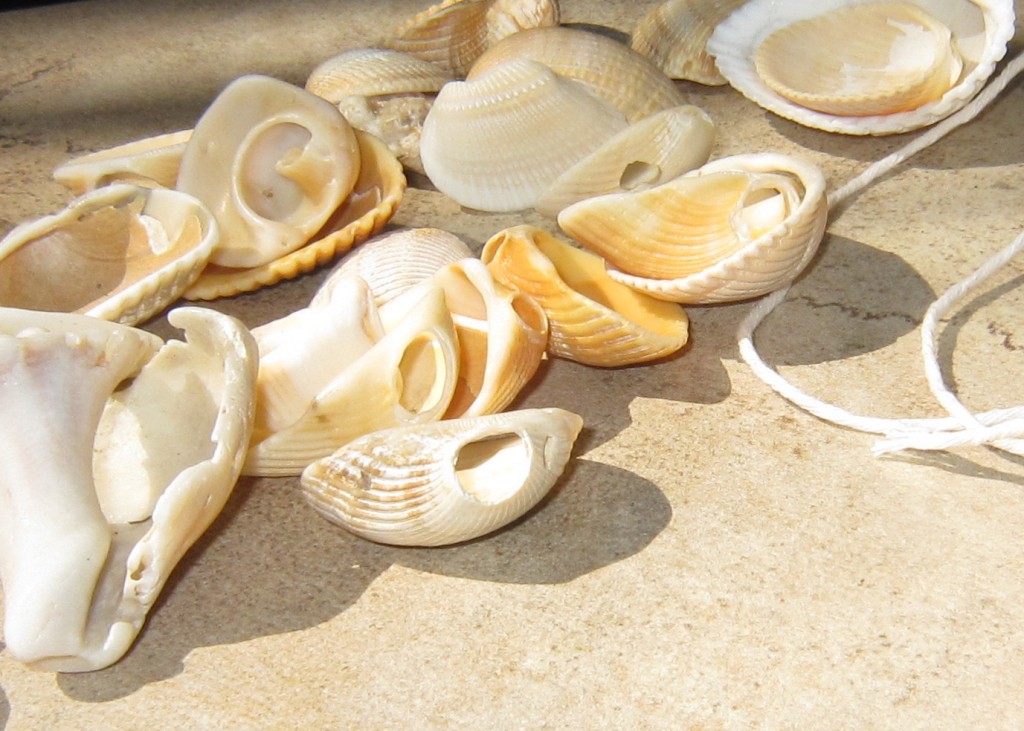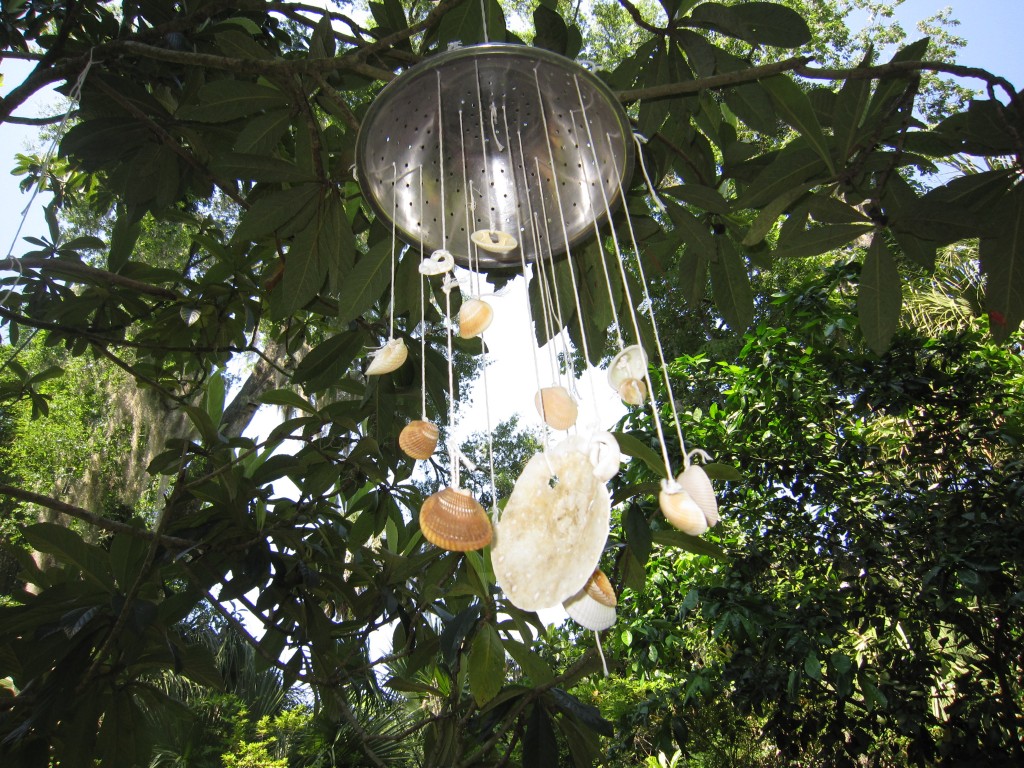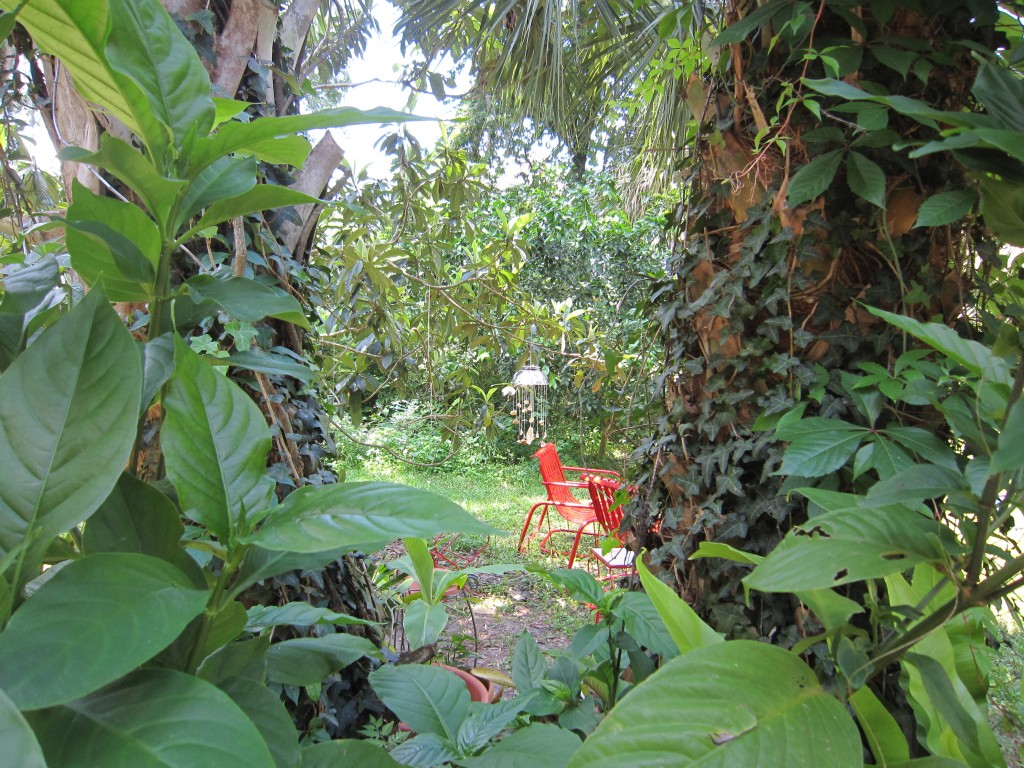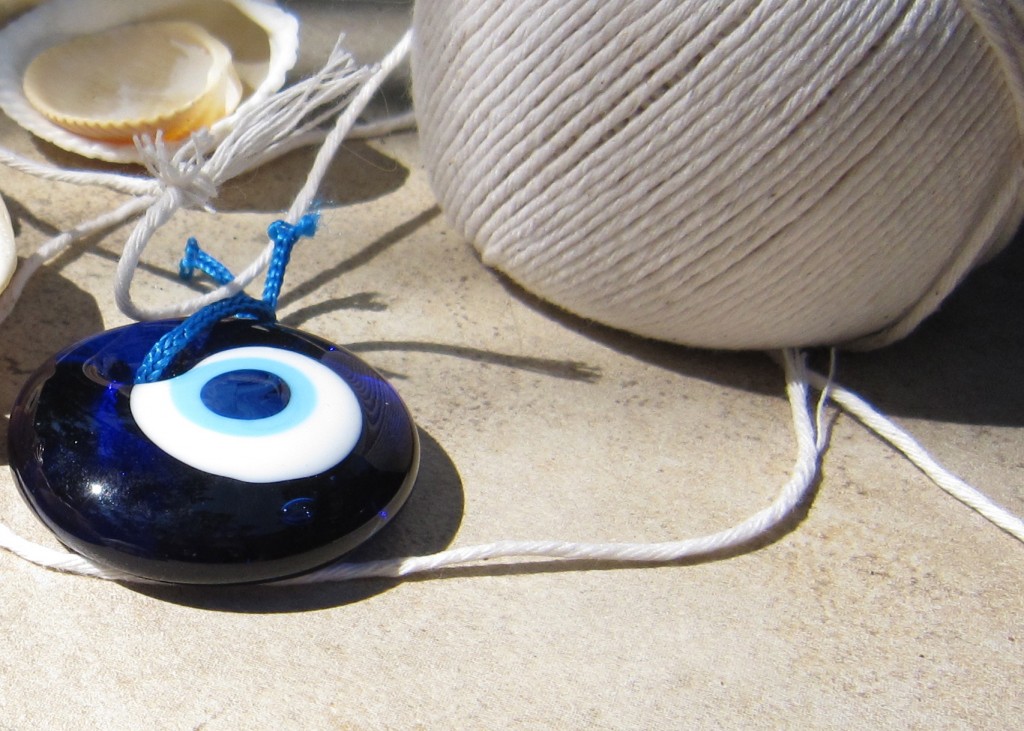Shells, like broken pieces of pottery, hold some fascination for me. When I see either scattered on the ground, I’m compelled to wonder how its previous owner used it. I want to know the back-story of where a shell or pot came from, and how it came to be tossed aside.
Since moving from the Midwest at age 12, I have been fortunate enough to visit many beaches. And from nearly every one, on nearly every visit, I have collected a shell or two, or 10 or 20. No more do I want these relics from the South Pacific, New York, Mexico, California and Florida gathering dust in baskets or glass jars. So I’ve come up with a very simple way to put them in view.
Inspired by local Native Americans who once used common shells as weights for fishing nets, I decided to take some shells from Mantanzas Inlet and Summer Haven Beach to make something useful.
The Timucuans, who lived in Florida before the Spanish colonialists arrived, were known to use a larger shell to bash holes near the hinge of an ark clam shell and then thread the shells onto woven cord — painstakingly made from sabal palm leaf — to weight a gill net.
Sometimes, if you have the luxury of patience, wave action does the bashing for you, making perfect holes for threading store-bought twine.
 Who knows? These really could be actual artifacts made a couple of thousand years ago by indigenous hands. Last month, Clara and I collected about three dozen such shells for a wind-chime project.
Who knows? These really could be actual artifacts made a couple of thousand years ago by indigenous hands. Last month, Clara and I collected about three dozen such shells for a wind-chime project.
 The large shell in the center is from a Long Island, NY, beach. The colander was a derelict I found in the garage. Once we finished, some nice shells remained, so using sticks, string and an evil eye protector from Greece, we also made a mobile, which has proven impossible to photograph, (probably because of the evil eye protector).
The large shell in the center is from a Long Island, NY, beach. The colander was a derelict I found in the garage. Once we finished, some nice shells remained, so using sticks, string and an evil eye protector from Greece, we also made a mobile, which has proven impossible to photograph, (probably because of the evil eye protector).
Now when I sip tea in my red garden rocker and I hear the clink-tink of the shells, I remember the beach, the friendship and the freedom of the ocean breeze.
Strainer shell wind chime how to:
Gather clean shells, twine and strainer. (If you don’t have an old strainer in the garage like I did just cross two sticks and fasten them with string at their intersection. The chime will hang from a branch from a string running down to the center point of the X).
To begin, I hung the colander from a tree, then strung a large shell from the the center of the colander. The broad surface area of this shell helps it to catch even small breezes.
Next, I threaded and knotted the shells onto string first, then I threaded the other end of the string through holes in the colander and knotted them on top. To create a neater appearance and for added strength, I tucked any extra string back down through the colander and tied another knot underneath. Using the colander made everything easy because the drain holes are consistently spaced. I didn’t use a mathematical formula for hanging these. I eyeballed it, looking to keep the colander balanced. I pushed the shells to see if they would swing into another shell and produce a sound.
I probably could have hung twice as many shells, but I liked the open, fairly uncluttered, look of this wind chime. It does make a subtle, pleasing noise to awaken the senses. In all, I think it took about 20 minutes to put this together. Eventually, I’m going to move it into a garden I’m planning for Clara on the east side of the house. More on that garden in future posts. In the meantime, happy plink, plank, plunk.


What a great idea! And what wonderful memories it must evoke.